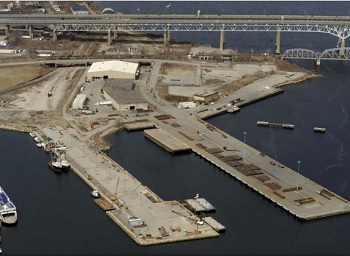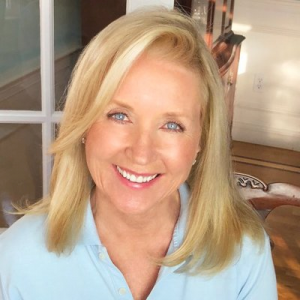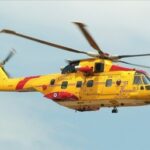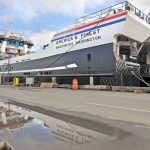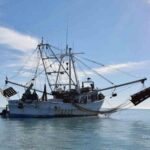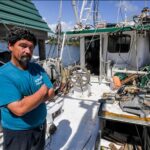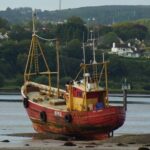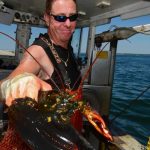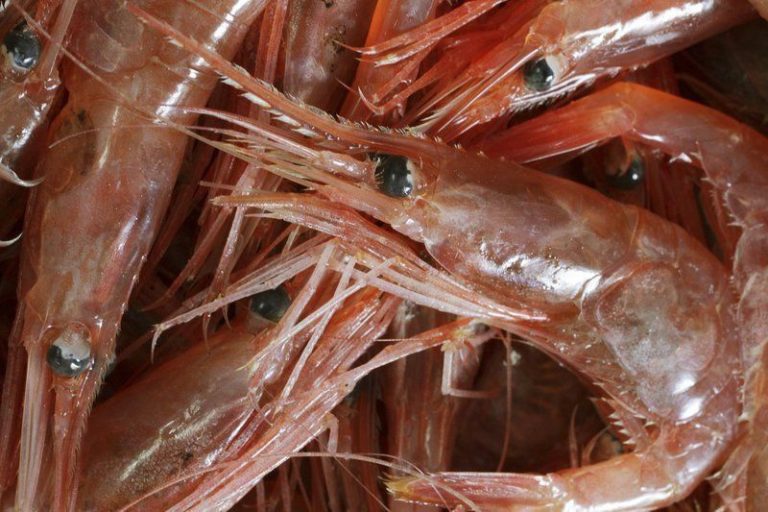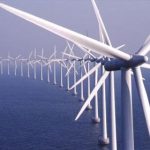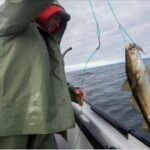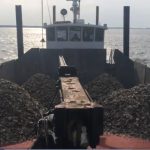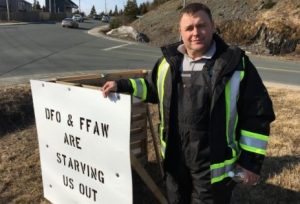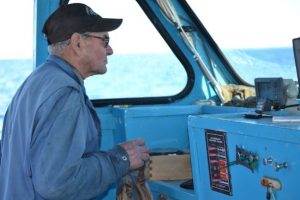Category Archives: Offshore Wind/Industrialization

Oil rigs and offshore wind farms may contribute to the spread of non native species
Scientists are investigating what role oil rigs and offshore wind farms play in supporting marine wildlife and the spread of non-native species. The base and legs of platforms, subsea pipelines and wind turbines can be home to different species. The animals include mussels, barnacles, shrimp-like amphipods and anemones. “We want to understand what could happen to the North Sea ecosystem if oil rigs are decommissioned, or offshore wind farms are installed. >click to read< 15:21:44
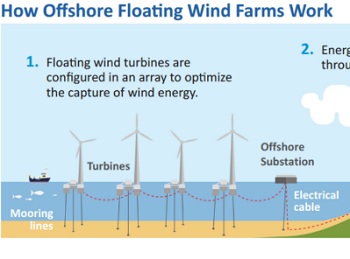
Fishing Industry Opposes New Floating Wind Farm Project Area
Navy says no to proposal to move floating wind farm area. The idea was discussed at the task force’s July 1 webinar, which replaced a planned public meeting in Morro Bay. Tom Hafer, president of the 90-member Morro Bay Commercial Fishermen’s Organization, criticized the proposal, saying it amounted to a “bait and switch.” Originally, Castle Wind, one of the proposed developers, suggested it would ask for a site for up to 100 turbines some 30 miles off the coast. The company spent months huddling with the Morro Bay fishing industry and the city and got them to agree to the idea. A memo of understanding was signed. The new task force proposal being discussed could move the 900-foot-tall turbines as much as half the distance closer to shore into waters they use for fishing, Hafer said. “This is going to screw up fishing,” Hafer said. “This is going to change the migratory habits of a lot of fish out there — albacore, salmon, black cod. Who knows what these are going to do?” Hafer also is concerned that the wind industry will want more territory in the future as well. >click to read< 09:15
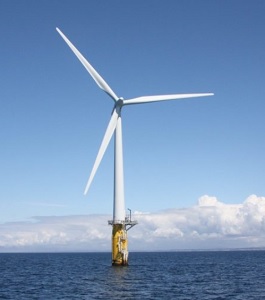
Reader has concerns about offshore wind turbines
There are two large wind-turbine projects proposed off our beaches. The lease area extends from the inlet at Ocean City north to Rehoboth. US Wind (an Italian company), according to their website, plans to install as many as 187 wind turbines. Orsted (a Danish company) plans to initially install 12 wind turbines that are 845 feet tall, with more likely coming after that., The wind tower components will be manufactured overseas since we lack the infrastructure to do so. They will be installed by experienced European crews. Instead of the many thousands of jobs US Wind and Orsted claim will be created, there will only be about 55 permanent jobs,,, by Geoffrey Pohanka >click to read< 10:17
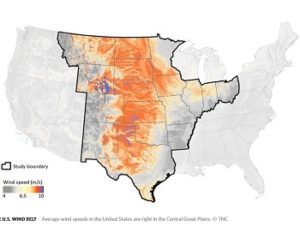
The U.S. “wind belt” – Map Shows ‘Low-Impact’ Locations for Wind Power
Wind energy developers both onshore and offshore face numerous challenges. Concerns about noise from wind turbines, disruption of visual aesthetics, and danger to wildlife have led to the cancellation or delay of several projects in recent years. The group’s analysis focused on finding land with high wind energy potential, but where impacts would be low to wildlife and the surrounding land. The Nature Conservancy partnered with organizations in each of the 17 states it studied, and gathered more than 100 data sets from conservation and land use organizations as well as state agencies. The group said more than 60 scientists worked to develop the siting map, with an eye toward helping developers avoid unsuitable sites. >click to read< 09:16
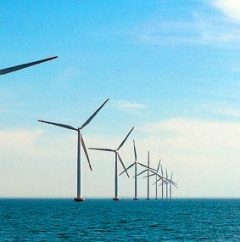
Here comes that “tracking your activity science”! URI researcher to map commercial fishing activity to help reduce conflict between fishing, wind industries
“I’m exploring a new way of improving spatial planning for offshore wind,” said URI Associate Professor Thomas Sproul. “One of the biggest sources of delay in the regulatory process for offshore wind has been because of the conflicts with commercial fishing.” Sproul said. Partners include the Massachusetts Fishermen’s Partnership, the Commercial Fisheries Research Foundation, the Responsible Offshore Development Alliance, and the Commercial Fisheries Center of Rhode Island. Julia Livermore, a supervising marine biologist for the Rhode Island Department of Environmental Management, is also collaborating on the project. >click to read< 09:30

Fishing industry leaders voice offshore wind farm concerns to Trump interior secretary
Industry representatives voiced a raft of concerns with offshore wind, including the safety of commercial and recreational boaters navigating the waters, issues towing fishing nets through the farms and the potential for disrupting marine life.,, “In the West, we do wind. You know where we don’t put a windmill? In the middle of a highway,” Bernhardt said. “I need a development program that is done in a way that is sustainable for everybody.” Members of New England’s commercial fishing industry who feel they’ve been cast aside in the rush toward offshore wind took their concerns straight to the top of the Trump administration Tuesday in a Seaport sit-down with Interior Secretary David Bernhardt. >click to read< 12:57
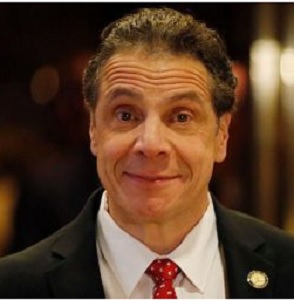
Offshore Wind Farms are new danger for Lake Erie through Governor Cuomo’s Green New Deal
The proposal to install offshore wind turbines on the Eastern side of Lake Erie was brought to my attention during the annual Woodlawn Beach cleanup last September. Since then I have learned much about how negative this would be for Lake Erie and the people and wildlife that depend on it, the protests around the world against these types of projects and the media paywalls that are stifling our knowledge of them. Global developers have called the Great Lakes the “Saudi Arabia of Wind,” and surprisingly, the Sierra Club and other environmental groups that oppose Peace Bridge reconstruction and shoreline development endorse the turbines. Can you see the dollar signs? Can you trust a global industry with our fresh water? By Mary Henson, >click to read< 14:22

SURVEY: Please Help Extreme Gloucester Fishing: Restructure, Retool, Retrain, Revive and Reunite the U.S. Commercial Fisheries
Extreme Gloucester Fishing Commercial Industry Training Center is doing a U.S. Commercial Fisheries Survey – Please help Extreme Gloucester Fishing with our efforts to Restructure, Retool, Retrain, Revive and Reunite the U.S. Commercial Fisheries Take the Survey. 1. Do commercial fishermen care about their industry? 2. Should fish be owned before they are caught?, 3.,,, >click to read<, and please leave comments or suggestions, and connect with others to get things started! Thank you, Captain Joseph Sanfilippo 10:30
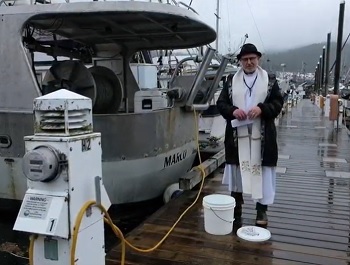
The 30th annual Blessing of the Fleet has been done differently this year in Juneau
Instead of the annual ceremony at the Fishermen’s Memorial on Saturday, the Alaska Commercial Fishermen’s Memorial Board posted videos online you can view from their website. President Carl Brodersen said four new names will be engraved on the memorial this year, James Lewis, Bob Bennett, Philip Daniel, and James Beaton. The 2019 names now engraved include Michael Walker, Ross Soboleff, Larry Painter, Lester Cole, William Larsen, John Pasquan, Robert Savikko, Joseph Hyde, Robert Becker, and Patrick Peterson. >click to read< with a link to watch the 2020 Video Ceremony @ http://www.akcfmemorial.org/12:37
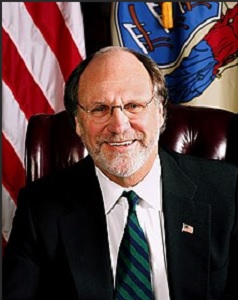
Looking Back: 2007-Wake up New Jersey before more of your tax dollars are wasted on Governor Corzine’s offshore windfarm
The Governor is proposing to create a huge 80 unit windfarm capable of producing 350 megawatts of electricity in the waters off the south Jersey shore at an estimated present cost of 1.5 billion dollars. Last week New York cancelled plans for a smaller farm, of about 40 windmills, off of Jones beach because of rising cost estimates already over 700 million dollars for a project originally projected to cost about 200 million. New York officials were smart enough to recognize a financial black hole before they started it. Are New Jersey officials? >click to read< 13:47
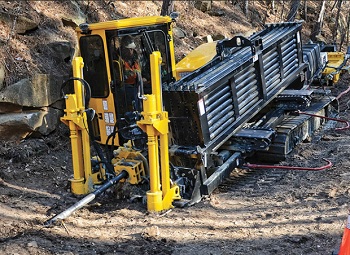
Senate Commission Wants Answers Regarding Exposed Block Island Wind Farm Cables
The Coastal Resources Management Council (CRMC) said its geologist recommended before construction of the offshore wind facility that Deepwater Wind, now owned by Denmark-based Ørsted, bury the two cables 6-8 feet deep using a process known as horizontal directional drilling. Deepwater Wind, however, relied on an independent engineering report that concluded the 12-inch-diameter cable could be buried at a depth of 2-4 feet using a devise called a jet plow. According to CRMC executive director Grover Fugate, CRMC’s governing board relied on the independent report to approve the more shallow depth using the jet plow process. >click to read< 09:14
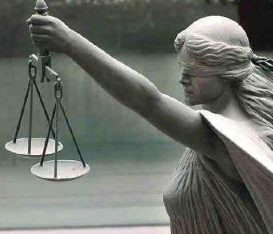
Future of offshore fish farming in federal waters at issue in court
The potential environmental and economic consequences posed by proposals for fish farming in federal waters dictate that Congress — not a federal agency — must decide how to regulate the industry, an attorney told a federal appeals court Monday. At issue before the 5th U.S. Circuit Court of Appeals was a September 2018 ruling by a federal judge who threw out National Oceanic and Atmospheric Administration’s rules for fish farms in the Gulf of Mexico, saying Congress never gave the agency authority to make them. >click to read< 14:58
Meet Chris Schillaci who Joins Greater Atlantic Region’s Aquaculture Program! – In December, Chris Schillaci joined the Greater Atlantic Region’s aquaculture program, bringing ten years of experience to his new role. We asked Chris a few questions as he was settling in. >Click to read<
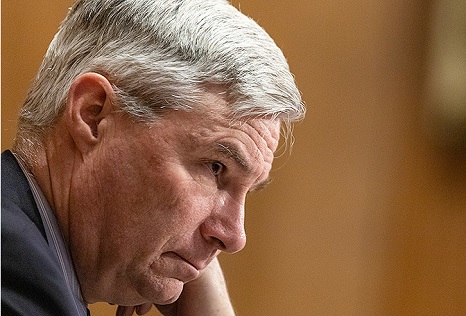
Top climate hawk bashes first big offshore wind project. Sheldon??
For the past seven years, Sen. Sheldon Whitehouse has given a weekly address about the dangers of climate change. Increasingly, some greens wonder if he is full of hot air. The Rhode Island Democrat, one of the Senate’s top climate hawks, has emerged as a leading critic of Vineyard Wind, an 84-turbine offshore wind project proposed in federal waters 15 miles south of Martha’s Vineyard.,,, Whitehouse’s statements echo concerns of Rhode Island squid fishermen, who have emerged as leading opponents of Vineyard Wind. >click to read< 12:21

EnBW North America hires fisheries liaison
EnBW North America has appointed Beth Casoni as the company’s fisheries liaison and has joined the Responsible Offshore Development Alliance’s (RODA) joint industry task force devoted to address issues of mutual interest to commercial fisheries and offshore wind. The company said its immediate attention is on the New York Bight – an area off the coasts of New York and New Jersey, where the federal Bureau of Offshore Energy Management is expected to auction wind lease areas in late 2020. >click to read< 11:22

Janet Mills wants Maine carbon-neutral by 2045. What will that take?
Gov. Janet Mills made a surprise announcement when she addressed world leaders at the United Nations Climate Action Summit last week: She had issued an executive order pledging that Maine will be carbon-neutral by 2045.,,, Renewable power drives everything. So what is that likely to look like? The good news is that Maine has massive renewable power potential, especially in regard to offshore wind, a sector the University of Maine is on the cutting edge of, having developed a floating turbine platform. Jacobson’s team already developed an all-renewable energy plan for Maine consisting of 35 percent offshore wind, >click to read< 17:25
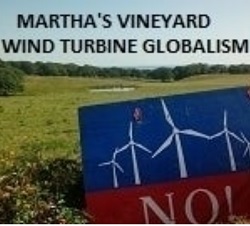
Martha’s Vineyard Wind Turbine Globalism
The first offshore wind farm financial fiasco in the United States was launched off the coast of Rhode Island’s Block Island in 2016. The cost of placing 5 wind turbines was 290 million dollars. The high voltage electric cables cost more than the turbines themselves. Block Island residents were told they would save 40 percent on their electric rates if the turbines were installed.,, never got the rate cut. The first Block Island wind turbine base was crushed during installation and later on start up a brand new gearbox had to be replaced. One out of the five turbines was defective the first day. The failure rate was twenty percent a business plan disaster. >click to read< 21:00

The Hamptons love green energy. But that wind farm?
This affluent enclave on the East End of Long Island is steeped in eco-conscious pride, with strict water quality and land preservation rules and an abundance of electric cars on the roads. So at first, many happily embraced a plan for an offshore wind farm that would help lead the way as New York State sets some of the most ambitious green energy goals in the country. But then came word that the project’s transmission cable was going to land in Wainscott, one of the most exclusive slices of the already exclusive Hamptons, where homeowners include the likes of the cosmetics billionaire Ronald Lauder and Marci Klein, a former longtime producer of “Saturday Night Live” and the daughter of Calvin Klein. >click to read< 08:21

Vineyard Wind Gasping for Air Until 2020
The Bureau of Ocean Energy Management has delayed the construction off our coast of Vineyard Wind, the country’s first commercial scale offshore wind farm, until 2020. I believe President Trump is squarely behind all the concerns of the commercial fishing industry that haven’t been adequately resolved by the wind farm folks, and if you don’t get the problems addressed now, as Carlos Santana would say, “you can forget about it.” Because five other offshore wind projects are planned adjacent to the site. Phil Paleologos >click to read< 19:58
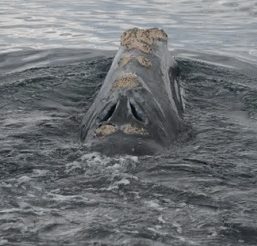
Opinion: Focus on oil industry, not lobstermen, in whale deaths
I went to the Aug. 20 meeting at NOAA regarding the lobster trap lines and the entanglement of the right whales.,, Larry Stepenuck brought up the problem of the mussel farms and their spat lines – another potential cause of whale entanglements. What! Is nobody hearing him? I think lobsterman Mike Goodwin also brought up a good point,,, It’s a gold mine out there. The big oil rigs with their seismic testing, wind farms, fish farms, mining of the ocean floor, etc., want a piece of the action, and those pesky lobstermen are raining on their parade. by Sue Waller, >click to read< 20:43
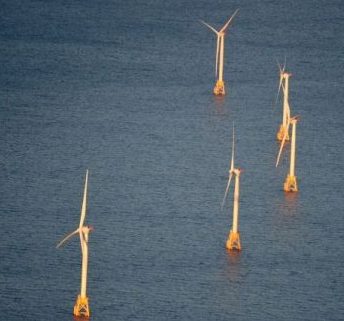
Spacing of Deepwater RI Ocean Wind Turbines Ignored After Deaths
Where is the investigation of what effect the spacing of the Block Island Wind Farm had on the death of two fishermen New Years Eve? On January 1, 2019, New Year’s eve while almost everyone was celebrating the new year drinking, watching parades and fireworks the fishing industry boats were hard a work bringing in their catch. The Mistress a 52-foot fishing trawler in the vicinity of the Block Island wind farm at 1:30 AM took on the water which overtook the engine room. >click to read< 11:12 >click to read< our coverage of the F/V Mistress

Collision Course: Offshore Wind Turbines Present New (Unnecessary) Mortal Danger for Trawlermen
The fishermen who work off America’s Atlantic coast, are furious over plans to spear thousands of industrial wind turbines into their fishing grounds, destroying not only the seabed (the source of their income and prosperity), but wrecking their fishing grounds, forever. Trawlermen off the New Jersey coast have already told developers what they can do with their projects: Deepwater in Deep Trouble: Fishermen Tell Off-Shore Wind Farm Developers to F@*#K Off,,, >click to read< 08:21

Troubling questions, concerns raised about off-shore wind farms
Oceanographer Jon Hare listed the effects of offshore wind development on the marine environment. There’s disturbance to the sea floor during installation of turbine platforms.,,,“Putting a pile into the sediment in essence is habitat alteration,” said Hare, a science and research director with Northeast Fisheries Science Center.,,The questions about offshore wind, of course, aren’t limited to the $2.8-billion Vineyard Wind project,,,,but there are more than a dozen proposals in the works all along the Atlantic Coast and plans for the Great Lakes and the West Coast. >click to read< 21:06
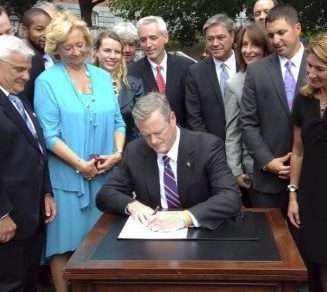
Vineyard Wind project lands in rough waters
The project, jointly owned by Avangrid and Copenhagen Infrastructure Partners, had seemed to be gathering permits the way a kid gathers shells on the beach. One after another, the developer added them to the bucket. Then the snag: The Edgartown Conservation Commission on Wednesday denied an underwater cable route off the town’s coastline, citing the potential disturbance to marine habitats and other conflicts. (Local fishermen weren’t happy, either.) On Friday, Vineyard Wind vowed to get a “superseding order” from the state Department of Environmental Protection – a more sympathetic venue – that would overturn the commission vote. More trouble lurks: Vineyard Wind also disclosed that the US Department of Interior’s Bureau of Ocean Energy Management would not issue a crucial permit, as expected, this week,,, >click to read<10:43

Developer: We won’t pursue wind farm in waters off Hamptons
The developer of one of the largest of three proposed wind farms contemplated for the waters off the Hamptons has withdrawn its tentative plan in favor of sites to the west, and is urging the federal government to restrict turbines from East End waters, according to the Germany-based developer’s top U.S. official.,, Bill White, managing director of East Wind LLC, a subsidiary of EnBW Energie Baden-Württemberg AG, said Friday the decision to withdraw and recommend against development off the Hamptons was primarily related to concerns about impacts on fishing. >click to read<10:08

Solar And Wind – Taxpayer-Funded Ponzi Schemes with renewable portfolio laws, or quotas created by your elected politicians
The solar electricity industry is dependent on federal government subsidies for building new capacity. The subsidy consists of a 30% tax credit and the use of a tax scheme called tax equity finance. These subsidies are delivered during the first five years. For wind, there is a subsidy during the first five to ten years resulting from tax equity finance. There is also a production subsidy that lasts for the first ten years. The other subsidy for wind and solar, not often characterized as a subsidy, is state renewable portfolio laws, or quotas, that require that an increasing portion of a state’s electricity come from renewable sources. >click to read< 13:58
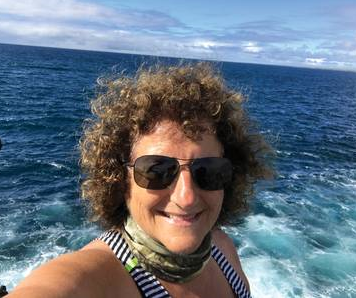
Offshore Wind: California’s New Gold Rush
When it comes to States promoting renewable, non-fossil electricity generation, California surely leads the list, from utility-scale regional grids to individual rooftop solar panels. In fact, a December 2018 update from the California Energy Commission (CEC) estimates the state may already have exceeded an initial renewable generation goal of 33% by 2020..,,, CA’s offshore process started in earnest three years ago when a wind energy company then called Trident Wind – now Castle Wind – submitted an unsolicited request to BOEM (Bureau of Ocean Energy Management) to lease a site in the Pacific near Morro Bay (about half-way between LA and San Francisco). >click to read<10:30
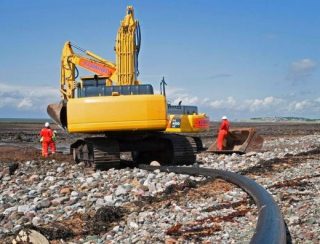
Undersea Power Cables – Electromagnetic fields have complex and possibly harmful effects on the valuable brown crab.
Over the past 10 years, Scotland has installed thousands of offshore wind turbines in the North Sea and is starting to deploy marine energy devices that generate power from tides and waves. It’s a green energy push that is slowly being replicated in coastal areas the world over. Though these installations are reducing coastal threats such as oil spills, they have the potential to cause other, more subtle, problems for marine life. From each offshore wind and tidal turbine, power cables snake to shore, connecting to power banks, converters, and the wider electrical grid. But these electrified cables could have odd and unexpected effects on seafloor life. >click to read<08:43
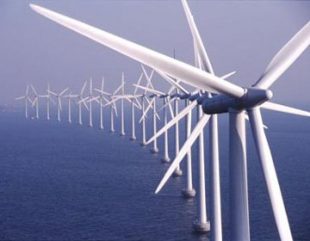
Offshore Wind Fiasco: Renewables Industry Faces $Billions In Compensation For Early Repairs
Ørsted must repair up to 2,000 wind turbine blades because the leading edge of the blades have become worn down after just a few years at sea. The company has a total of 646 wind turbines from Siemens Gamesa, which may potentially be affected to some extent, Ørsted confirmed. The wind turbine owner will not disclose the bill, but says that the financial significance is “small”. However, it is far from just the Anholt Park that is affected. The blades at several British Ørsted offshore wind farms must also be repaired after just a few years on the water. >click to read<12:12






